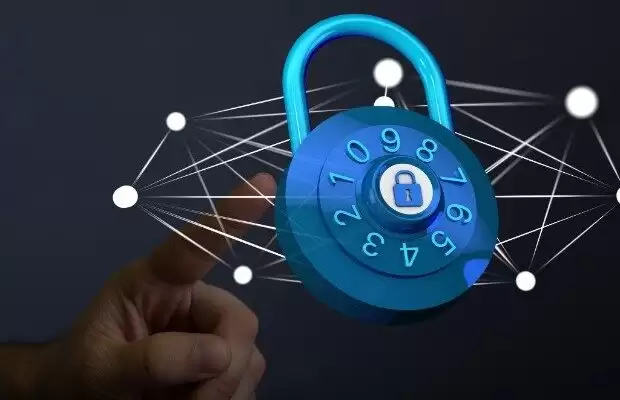Blockchain technologies have become a boon for humans. They offer myriad design configurations and applications that have made it possible to enhance security measures. Despite all the purported security benefits it brings together with itself, the blockchain market is always riffed with security issues– over $14Bn crypto assets were stolen in 2022 alone, and it is speculated that this will shoot up by 57% in the year 2023.
This is where blockchain security audit steps into the scene– to prevent the massive hacking exploits in the future! This brings us to an important question: Is blockchain safe in terms of design? Or should blockchain use cases be enhanced for security?
Is Blockchain Safe In Terms Of Design?
The main responsibility of blockchain technology is to digitize and distribute record-keeping across a network so that the verification of transactions does not rely on a central authority. Together with the distributive nature of blockchain, there are several aspects where that vary. These include permissions, participant types, sizes, transparency, roles, and transaction process. There is no single point of failure in blockchain because of its decentralized nature.
Also, there are numerous built-in security qualities like identity controls, cryptography, contracts, public and private keys, and consensus mechanisms. These offer data protection and integrity.
These contribute to strengthening the aspects of the triad–confidentiality, integrity, and availability by enhancing resilience, transparency, and encryption. People build blockchains, which is why they are subject to human errors, bias, and exposure that depend on malicious attacks, use cases, and subversion. The chaos of the real world is beyond fancy math and software capabilities. Blockchains are only theoretically safe by design as a result. Blockchains must be developed and put into use with security in mind.
A Use Case-Based Approach To Blockchain For Cybersecurity
The technologies that people use to build the blockchain-based platforms and applications have a lot of potential for robust security, however, they haven’t started. Therefore, there is a pressing need for the security leaders to collaborate with product and platform builders so that they can first know what the problems are, then they can interact with them for planning new security measures and tradeoffs.
Here are the blockchain use cases for cybersecurity.
Resilience and availability
The decentralized nature of blockchain aids in providing support resilence against hacks, corruption, and downtime. These are the following vulnerabilities that this process mitigates:
- Blockchain distributes information and communication technology within a network, resulting in minimizing data exposure and redirecting users after a cenralized database is attacked or goes offline.
- For all the events of DDoS attack, one way is to decentralize DNSes.
- Decisions about security can be made more distantly from the centre of the network in an IoT environment by dispersing activities and administrative controls.
2. Data integrity
You already know that we require consensus to verify the transactions and data cannot be altered after it is deployed on the blockchain. However, off-chain data can be corrupted. This is where the role of on-chain signatures come into the picture wherein, security is paramount.
Three examples of data integrity applications for which security leaders are working to build blockchain designs are decentralized voting, health and scientific data collaboration, and decentralized metadata.
3. Traceability and provenance
Traceability and transparency are chief in blockchain designs. However, the benefits of these core concepts are different for different applications. Within the domain of supply chain, blockchain stores tamper-proof records of transactions and data related to the freight orders across customers and the entire product lifecycle.
In financial use cases, with the help of transparency and immutability of payment history, the need for a centralized broker minimizes. It also improves security and privacy of transactions.
4. Authenticating the interactions between devices or software
It is not like every transaction on a specific blockchain will be finance-based; they can be used for any verifiable interaction. The main reason for cybercrimes is the proliferation of suspicious or malicious “updates”. Therefore, one of the ways to avoid cyber threats is by authenticating software updates.
Organizations use the technique of Blockchain hashing to monitor and verify updates, patches, and download. Because of this, they have prevented a lot of supply chain attacks.
5. Verifying individuals
There are several components of blockchain that we can apply to protect identity, authenticate, access management, and much more. Following are the security benefits associated with these capabilities:
- Protecting sensitive data: It is possible to shift on-chain data, for instance- a hash instead of sensitive information
- Preventing identity theft: Blockchain uses cryptographic keys for the authentication of identity attributes and credentials, resulting in the prevention of identity theft.
- Minimizing data: Security leaders or IT teams can easily employ zero-knowldge proofs to reveal only those things that are important for an application to work.
6. Validating ownership
Before anyone knew about the existence of digital ledgers, it was almost impossible to prove the ownership of online assets. With the coming of NFTs, artists were able to digitally watermark their media. Similarly, there are several security benefits of creating an immutable record of ownership with cryptographic keys across different blockchain use cases like:
- Every individual, whether a student, teacher or any other professionals can own their credentials.
- Manufacturers of different brands can attach NFTs to all their goods to offer authenticity to the clients.
- Creators don’t need to worry about protecting their copyright. With this, they can easily
These are some of the use cases of blockchain for cybersecurity. This points towards the importance of this underlying technology from the aspect of cybersecurity and prevention of hacks. Before applying these use cases and utilising them to promote confidence in the digital world, security experts must comprehend the advantages and disadvantages of blockchain’s general design.








